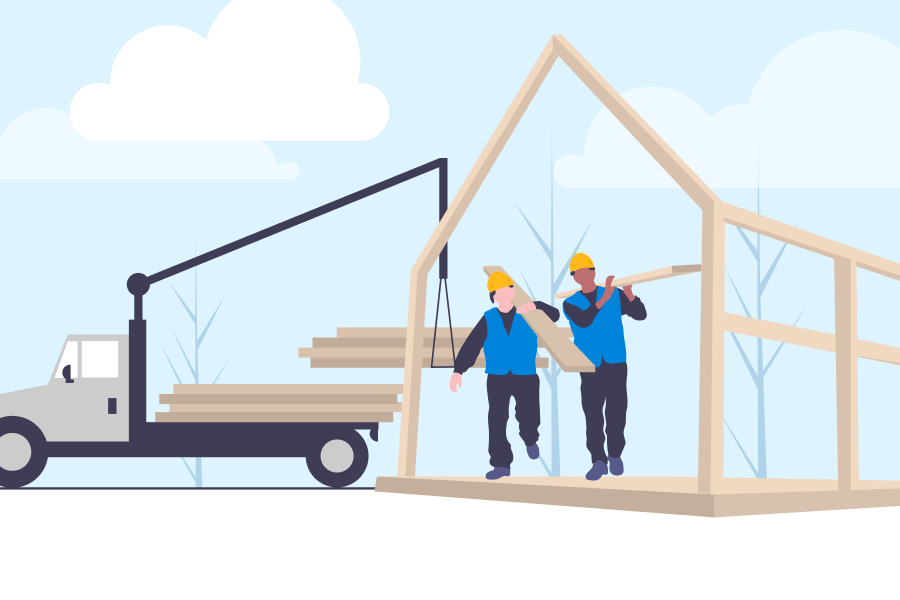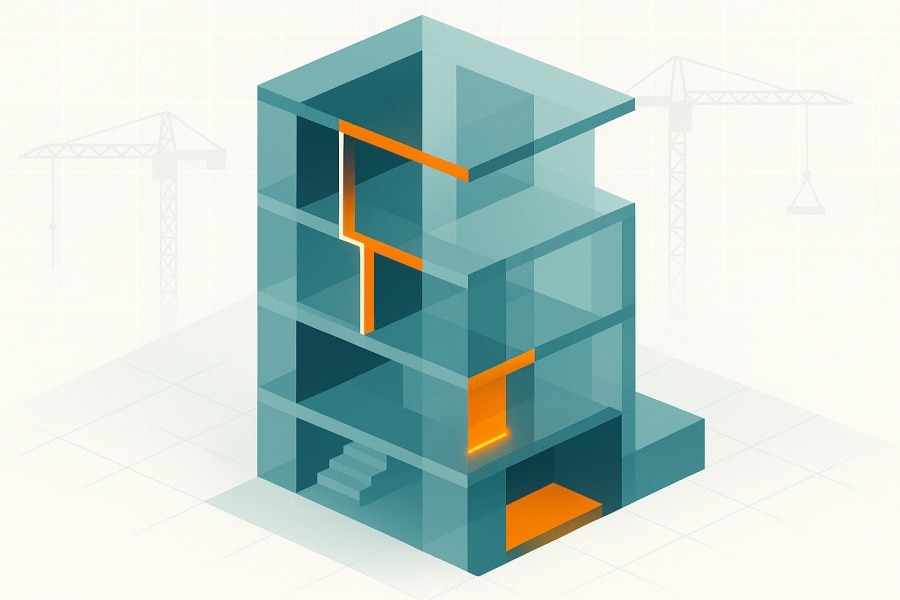Australia’s construction and demolition industry generates more than 27 million tonnes of waste production each year and is the largest source of managed waste in Australia.
Building materials account for about half of all materials used and about half the solid waste generated worldwide. These materials have an environmental impact at each step of the building process—from extraction of raw materials, processing, manufacturing, transportation, construction and disposal at the end of a building’s useful life.
Construction by-products are responsible for increasing stress on our finite waste management sites, construction and also risk polluting waterways and soil. These impacts can be detrimental to communities as well as the environment.
Where does construction waste go?
While generated on Australian building sites, not all waste is diverted to our domestic landfills. Exported waste includes:
- Glass
- Plastic
- Tyres
- Paper and cardboard
- Regulated hazardous waste
As more countries begin to ban or reduce waste imports from Australia, all industries need to start considering new methods to reduce the waste they generate.
Effective strategies to manage construction waste are critical in reducing the environmental impact of the construction industry. However, managing the cost and logistics of legislated requirements may be challenging, in particular for the smaller construction companies that make up the majority of the industry in Australia.
Balancing the needs of continuing investment in infrastructure with the needs of the environment can be challenging—but not impossible. The construction industry has the opportunity to take a leadership role in reducing waste and leading the way in waste management techniques. We’ve compiled some important information below to help you strike the right balance.
What is construction and demolition waste?
Construction and demolition waste includes products such as timber, concrete, bricks, tile, rubble, metal, plastics, plasterboard, cardboard and paper.
Eliminated or discarded as no longer useful or required, the waste may have occurred at any one of a number of stages in the construction process, from procurement through to completion.
Sometimes, in ordering products for a new project, companies over-order materials. Once construction is finished, the left-over product becomes waste. While many waste products may be recyclable, the production of hazardous waste is increasing.
Hazardous waste may be classified into more than 70 detailed waste types, with the most common including contaminated soils and asbestos from development and demolition projects and wastes from the chemicals, heavy manufacturing and mining industries.
Construction results in other waste that may not be as evident. The built environment has in the past and in some cases continues to:
- Consume significant amounts of the earth’s resources (especially energy)
- Generate polluting toxins and waste
- Create conditions leading to a loss of soils and biodiversity
- Interfere with life support systems (the water cycle, soil systems and air quality)
- Exacerbate urban sprawl, traffic pollution, social inequities and alienation
However, the building sector is working hard to identify and implement ways to reduce environmental impact and improve social cohesion. If economic and social development is to continue without destroying the environment that sustains us, each member in the building sector must play their part in finding new pathways to sustainable futures.
Australia’s National Waste Policy
The Australian Government’s National Waste Policy is focused on building collective action toward a circular economy where waste—including from construction and demolition—is reused. The report recognises that emerging technologies as well as community acceptance of waste (in Australia as well as to the global destinations we offload our waste to) means we need to find innovative and sustainable ways of reducing waste.
The policy focuses on a number of key areas:
- Avoid waste
- Improve resource recovery
- Increase use of recycled material and build demand and markets for recycled products
- Better manage material flows to benefit human health, the environment and the economy
- Improve information to support innovation, guide investment and enable informed consumer decisions
- Increase demand for sustainable or green buildings through the use of sustainable materials as well as constructing energy-efficient buildings
The challenge for construction and demolition businesses is to find ways to reduce waste that also improve their bottom line.
Cost management
While the construction industry is cost-competitive, various state governments have boosted their infrastructure investment, resulting in unprecedented opportunities for businesses across the whole supply chain. This means there is no better time to test and build improvements that help reduce wastage while resulting in better financial and quality outcomes.
Tapping into the circular economy not only helps leverage commercial opportunity and the development of new industries and jobs, but it also reduces greenhouse gas emissions and increases efficient use of natural resources (including energy, water and materials).
Simple ways to manage the cost of waste to your business include:
- Encourage designs that produce less waste
- Use better software and tools that improve the forecasting of the materials you need
- Stagger the arrival of product to match work packages, reducing the risk of damage and theft
- Store surplus products in a safe place to be used again
- Separate waste as you go to prevent cross-contamination and improve recycling
Make sure you’re up to date on changing requirements as well as opportunities with the raft of education and training.
Ongoing education and training can help you stay on top of innovation and new best practice methods for managing construction and demolition waste. Ensure your workforce is upskilled to ensure your business remains relevant.
Your Construction Waste Management Checklist
- Have an environmental management plan
Environmental management plans help you consider and determine how an activity may impact the surrounding natural environment. These plans also help you plan how to avoid, minimise, offset or manage the impact toward ensuring the activities are environmentally acceptable.
2. Secure stakeholder buy-in to ensure the local community and relevant parties are onboard
There’s no getting away from the fact that construction impacts people and communities. Many construction projects lose time and money when this impact isn’t considered and properly managed. Working with the community as early as possible in the process—using expert engagement specialists—reduces risk to your project and in many cases improves the end result.
3. Follow the waste hierarchy—Avoid, Reduce, Reuse and Recycle, in that order
- Prepare for and manage which products you buy, how much and when
- Reduce wastage through storing surplus materials for use at a later time
- Source materials to reuse such as plantation timber, soil and fill or recycled concrete for appropriate aspects of the job
- Sort materials to reduce contamination and enable recycling
4. Keep up with the latest best-practice guidelines and government policies
Innovation and new technologies mean that expectations and opportunities around construction waste management are constantly changing. Tap into your Local, State or Territory Government’s waste management guidelines to make sure your operation is compliant.
Ongoing training and development is also offered through Councils and State Government agencies as well as your industry networks. Subscribe to your local network to stay up to date.
5. Determine the best waste management options on a project-by-project basis
Every construction job has specific challenges and opportunities. Take the time to understand the requirements of each job to plan in advance and to ensure you have considered the best options across the complete lifecycle of the construction process.
Waste isn’t exclusive to the product you order and later discard. Waste is about looking at every aspect of your construction business and exploring ways to make your own operation more sustainable—from the automation of product ordering and other procurement tasks, to timesheet and job management and more. Take a 360-degree approach to reducing waste and your business will be a winner.











